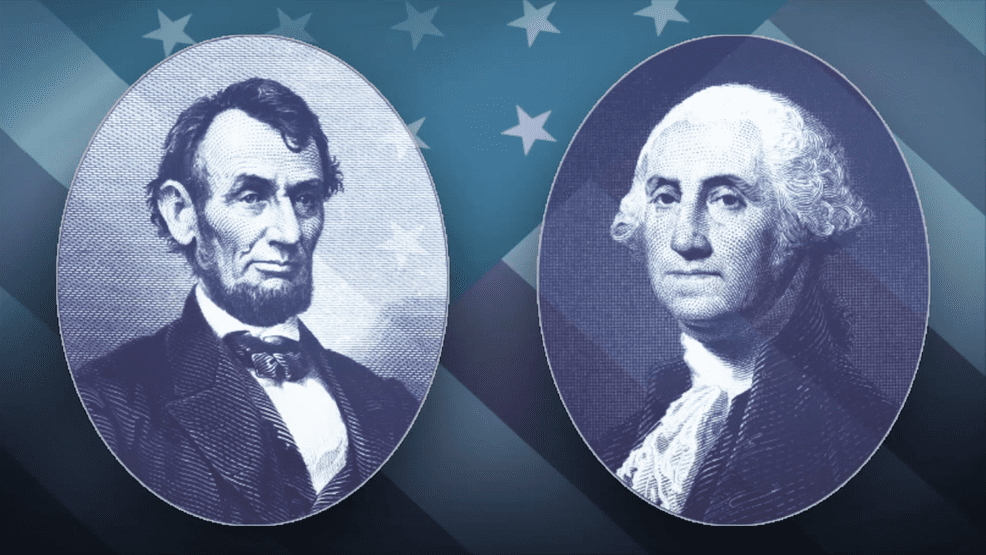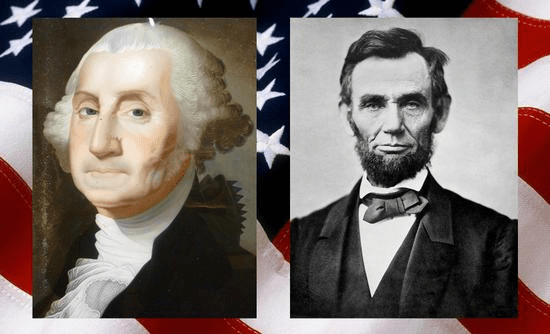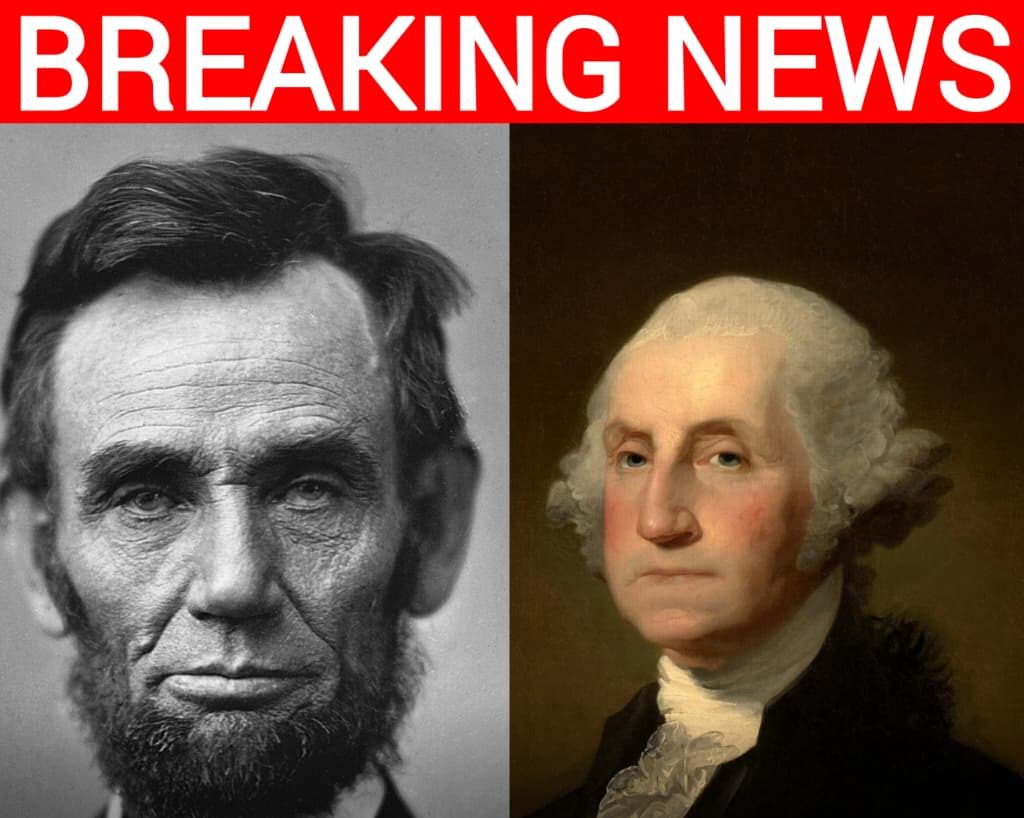Florida Moves to Mandate George Washington and Abraham Lincoln Portraits in Every School — A Patriotic Push to Revive American Pride
In a move that’s already sparking nationwide attention, Florida lawmakers are advancing a new proposal designed to put two of America’s greatest presidents back where many believe they belong — front and center in the nation’s classrooms. The bill, known as House Bill 371, would require schools across the state to display portraits of George Washington and Abraham Lincoln in every K–5 classroom, as well as all middle and high school social studies rooms. For supporters, it’s more than a symbolic gesture. It’s a statement about identity, history, and the values that define what it means to be American.

The legislation, introduced by Florida Republicans, comes amid ongoing national debates over how American history should be taught — and which figures deserve to be celebrated in schools. Supporters argue that portraits of Washington and Lincoln aren’t just classroom decorations; they’re visual reminders of the nation’s founding principles and the sacrifices made to preserve them. “These men aren’t partisan symbols,” one Florida lawmaker said during committee discussion. “They’re part of who we are as a country. Every student should grow up seeing their faces, knowing what they stood for, and understanding how their leadership shaped the United States.”
If passed, the bill would require schools to place portraits in a “prominent and visible location,” ensuring that every student, regardless of grade level or background, encounters the images daily. The legislation mirrors Florida’s broader push to emphasize civic education and patriotic learning, policies that have already drawn both praise and criticism nationwide.
Supporters of the measure say it’s a necessary correction to what they view as an educational shift away from America’s core identity. Over the past few years, debates over school curricula have divided communities, with critics accusing progressive educators of downplaying traditional American history in favor of revisionist interpretations. Florida’s move, they argue, is about restoring balance — ensuring that the nation’s founding and the leaders who guided it through its greatest crises are recognized for their enduring importance.

“Washington and Lincoln were not perfect, but they embodied courage, conviction, and faith in the American experiment,” said one state education official backing the proposal. “When a child sees those portraits every day, it’s not just about history — it’s about understanding what leadership and integrity look like.”
The bill fits into a broader pattern of education reform under Florida’s conservative leadership, which has prioritized patriotism and civics in classrooms. In recent years, the state has implemented a curriculum requiring instruction on the Constitution, the Bill of Rights, and the Federalist Papers. It also passed legislation ensuring that students learn about victims of communism, totalitarian regimes, and the importance of American freedom. The portraits law, lawmakers say, complements those initiatives — grounding students in the human faces behind the founding ideals.
But as with many of Florida’s educational reforms, the move has drawn criticism from progressive activists and some educators who argue that it oversimplifies history and politicizes the classroom environment. Critics claim the measure prioritizes symbolism over substance and risks transforming history into political theater. One teachers’ union spokesperson argued that “mandating portraits doesn’t automatically create civic understanding,” adding that what students need most is critical engagement with history, not “ideological messaging from above.”

Yet for many Floridians, the backlash only underscores the cultural divide between those who believe America’s history should be celebrated and those who think it should be continually re-examined. Governor Ron DeSantis, who has made education reform a cornerstone of his administration, has not officially commented on the new bill but has previously voiced support for efforts to “reinvigorate civic pride” and teach “the real history of America — the good, the bad, and the inspiring.” His administration’s education department has also emphasized that historical literacy and patriotism go hand-in-hand, rejecting what they call the “anti-American cynicism” creeping into classrooms across the country.
Parents, too, have responded positively to the measure. At a public forum in Tallahassee, several parents spoke about the importance of giving their children role models who represent strength, sacrifice, and national unity. “These are the faces every kid in America should know,” said one mother from Jacksonville. “George Washington gave us a country, and Abraham Lincoln saved it. If that’s not worth honoring every day, what is?”
The portraits requirement, though seemingly simple, reflects a deeper struggle over who gets to define patriotism in modern America. In the wake of years of political polarization, cultural battles, and debates over historical interpretation, Florida’s initiative feels like a declaration — a statement that national pride and historical reverence are not outdated concepts, but essential ones. Supporters see it as a step toward restoring the moral and civic backbone of the next generation.

George Washington’s portrait, often seen in textbooks but rarely given visual prominence in classrooms anymore, represents the country’s earliest triumphs and most difficult choices — independence, unity, and restraint in power. Abraham Lincoln’s image, by contrast, embodies perseverance through the country’s darkest chapter and the resolve to hold the Union together. Together, their faces have long served as twin symbols of courage and conscience in American history. Florida lawmakers believe those symbols should return to everyday visibility, not just in museums or history books.
One striking feature of the proposal is that it mandates the portraits in all classrooms, regardless of a school’s socioeconomic status or location. That universality is intentional. Lawmakers have said the goal is to make patriotic education accessible to all — not something reserved for private institutions or special programs. “You shouldn’t have to go to an elite school to learn to love your country,” one sponsor of the bill said. “Patriotism belongs in every classroom, from Miami to Pensacola.”
The proposal also includes provisions for the state’s Department of Education to provide schools with standardized portraits that meet specific historical and artistic criteria. The goal is consistency — ensuring that each classroom displays accurate, dignified images of both presidents. Local districts would be responsible for framing and maintenance, and compliance checks would be included in regular school inspections.

Beyond symbolism, supporters argue that visible displays of national heritage have tangible psychological benefits. Studies cited by advocates suggest that exposure to national symbols can foster civic engagement, community pride, and a sense of belonging among students. By anchoring young minds to the nation’s foundational figures, Florida lawmakers believe they’re planting seeds of unity in a time of division.
As the bill advances through committee hearings, public response continues to grow. Conservative groups have praised the legislation as “a model for the nation,” while opponents have described it as “performative politics.” Yet even critics admit that the images of Washington and Lincoln remain among the few unifying symbols left in American life. “You don’t have to agree with everything they did,” one historian noted, “but you can’t deny their impact. They’re the reason this country exists in the first place.”
If the measure passes, Florida would become the first state to mandate the display of both presidents’ portraits across all grade levels. Supporters hope it will inspire similar initiatives nationwide, creating a ripple effect of patriotic restoration in schools from coast to coast.
In an era where history itself has become a political battleground, Florida’s proposal feels both nostalgic and defiant — a reaffirmation of enduring ideals amid cultural chaos. Whether the move is hailed as visionary or dismissed as theatrical, its message is unmistakable: some legacies deserve to be seen, not just remembered. And for Florida lawmakers, few legacies stand taller than those of George Washington and Abraham Lincoln.



